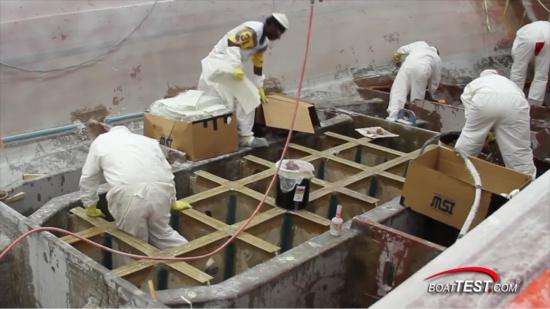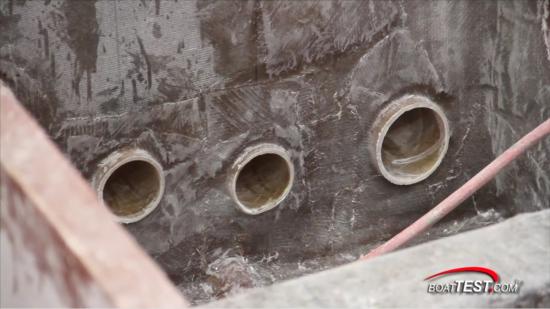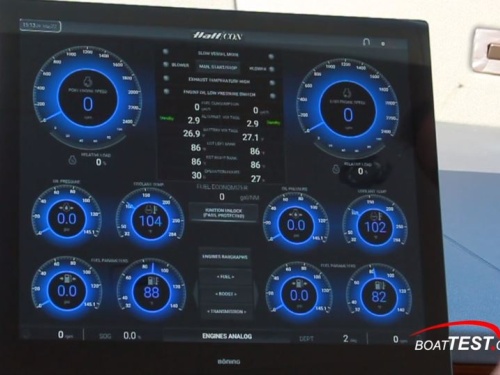Access More Boat Tests
Already have an account? Login
Hatteras Factory - Hull and Construction
Captain's Report
Resin Infusion
Introduction
An interesting topic is the lamination process of Hatteras’s larger yachts. One of the distinguishing features about a Hatteras yacht are areas that you can’t see as the owner, and that is the hull, and it deserves a closer look at some of the things they’re doing.
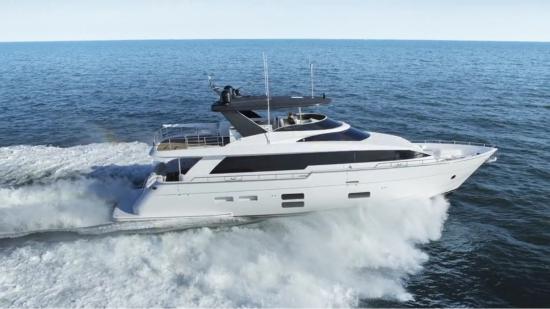
Resin Infused Process
Hatteras utilizes the resin-infusion process not only for the manufacturing of its hulls, but also, for its stringers, and bulkheads as well. This process has two distinct advantages; first it’s a more rigid structure that holds its shape in arduous conditions, and second, it enables a glass-to-resin ratio of 60 to 40 which saves weight, and maximizes strength.

Interior Structure
The interior of the hull, the main structure is made from this H80 Divinycell foam core. The coring is scored to better allow it to conform to the shape of the mold.
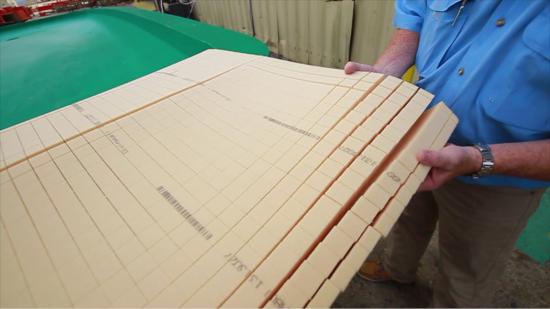
As you can see, it’s flexible and what it allows it to do is when they go through the resin-infusion process, it gets the resin down in the grooves of the core, and this is what makes that hull one unitized piece. Now it comes cut out in specific shapes for a particular model, and each one has a number, that way the craftsmen know where to place it within the hull.
Resin Infusion Process
After applying the gelcoat, a skin coat, and the outer laminate, the Divinycell foam is placed in the hull above the waterline. The complete hull is vacuum-bagged, and the resin infusion begins. In this cutaway cross-section of the hull, you can see the outer and inner layers of glass, the foam core, and then all voids are filled with resin. The resin not only fills voids between the coring, but the coring itself becomes completely encapsulated by the resin.
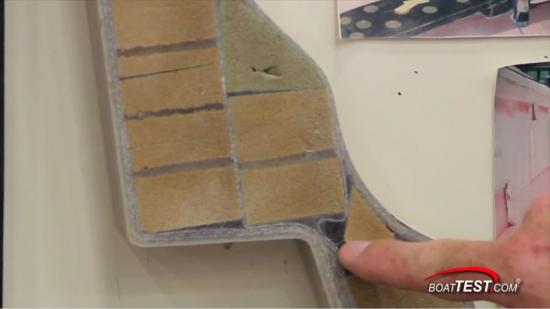
Vacuum to the Hull
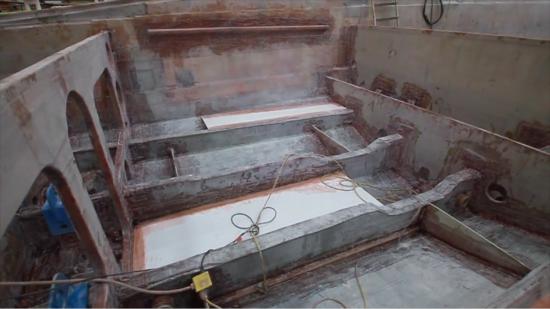
After the hull has been resin infused, Hatteras sand blasts the entire interior, which gives it a slight rough finish. What that enables the craftspeople to do is when they put the resin-infused bulkhead in here and glass it in, it gives the two a better bond.
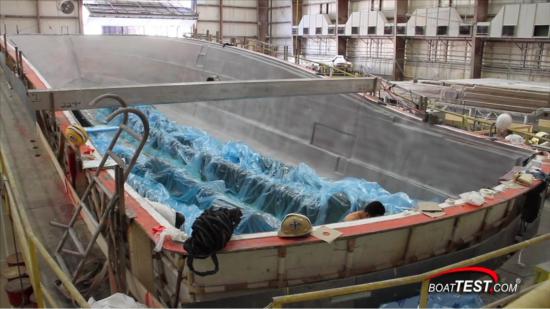
Here you can see the bag being placed over the stringers, which have been manufactured outside of the hull at the bottom of the boat. They will be resin infused in a vacuum to the hull. The same process is done with all bulkheads which are created with the same resident-fusing method outside of the hull. Once the process is finished, the hull becomes as hard and durable as granite.
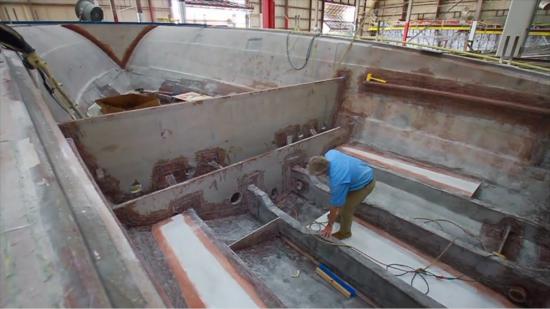
Construction Details
An interesting design feature about the GT series, is that the fuel tank is completely integrated into the hull between the stringers. By using the fiberglass hull bottom, stringers, bulkheads, and decking for the sides, top, and bottom of the fuel tank, Hatteras saves weight and builds even more strength into the keel. It also lowers the boat’s center of gravity making it more comfortable into seaway. Hatteras bulkheads are thick for sound attenuation and strength, but they are also light. RFP piping is glassed into bulkheads and stringers to prevent chafing of wire looms of plumbing. These are just a few of the construction details that Hatteras Yachts uses to build what are among the strongest yacht hulls in the world.
